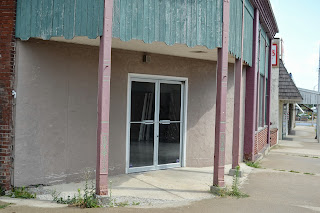First, what makes a wiki diferent from a Portal, Blog, or Google Doc assignment involving collaboartive work?
Second, How can wiki's be assessed? Is there a difference, consider Google docs that can record individual contributions to collaborative assignments?
Third, what type of assignment takes advantage of a wiki's tools?
I am not sure I have an answer to these questions yet. I suspect, assignments that don't have an obvious ending would work best. Assignments geared toward describing or reporting a topic. I am thinking of course of wikipedia. Students could pick historic figures to write about or greographic locations or scientic discoveries or any number of classifiable topics of an endless depth and variety. Each successive class could build upon previous classes. Pedagogically, I would theorize that each successive class would improve upon the level of work tendered by preceeding classes.
How can you use a wiki in your classroom? Here is a sample "Grade Level Learning" assignment for the Freshman Class.
Overview
During GLL 2014, the freshman class will divided into groups of 12 to 16 students and two teachers. These classes will learn several Web 2.0 tools while promoting a community services event. They will check each other's work in a peer review fashion and finally present their projects to the whole group.
Assignment:
Look at http://mashable.com/2007/07/20/online-productivity-god/ this site has 400+ web.20 tools to help you become more productive. Have students go to thinkinginschool.wikia.com and select a combination of tools to promote a non profit organization of their choice online. An example would be to promote the Houston Food Bank by taking pictures during our community service days, then loading the photos into flicker. Then open a wiki page that describes the soup kitchen, it's mission, members of the community (with their permission) and history. User tools like mosaica, jigsaw, Wordle, or Voki to tell there story and to encourage your classmates to volunteer at the Houston Food Bank.
45 Minute class periods.
 |
| You are the scaffolding to support students. |
Day 1 Form Teams, Pick Non-profits, discuss project possibilities.
Day 2 Define projects per team, Obtain faculty approval.
Day 3&4 Research Non-profits
Day 5 & 6 Complete history page of wiki
Day 7 Add "tools" and finalize content
Day 8 Work day, Peer to Peer review
Day 9 & 10 Presentations.
Technological
Allow students to form into groups of two or three students. They should select their own non profits and in a class wide, teacher moderated discussion, toss out and discuss various combinations of wen 2.0 tools, themes, and techniques they could use to develop their wiki page and promote their venue. This is a Cloud based assignment and should therefore be accomplished on or off campus.
Pedagogical
Assessment will be based on student out comes and the assignments will be project based. Encourage meaningful learning by empowering student teams to decide as many contributing factors as possible.
Remember to make students responsible to complete their tasks on time.
Content Knowledge
Student should be able to reflect one the tools they selected to use in their wiki. Each student team needs to provide clear, accurate , and motivational pages with the goal to persuade the viewer to choose their featured organization. Use appropriate citations for copyrighted material.
Reflection piece - Describe how you developed these skills in your student teams.
perseverance
collaboration
communication
Trust
commitment


